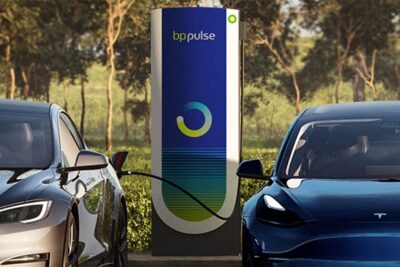USA to return to stricter vehicle emissions standards
The administration of US President Joe Biden is apparently aiming for a return to stricter consumption and emission standards for cars. There is also progress in the legislative process on President Joe Biden’s slimmed-down infrastructure programme.
First, on fuel economy and emissions standards for vehicles, which had been softened under former President Donald Trump. According to information from the Associated Press, the Biden administration initially wants to adopt nationwide, starting with the 2023 model year, the 2019 agreements concluded by the California Environmental Protection Agency (CARB) with Ford, Volkswagen, Honda, BMW and Volvo for voluntary CO2 reductions in the US state. In the following years, these limits are to be successively tightened. The goal is for 40 per cent of all new car sales to be electric vehicles by 2030.
Remember: Under former US President Barack Obama, carmakers were required to increase efficiency by five per cent per year for model years 2021 to 2026. In the USA, as we know, fuel consumption is not given in litres per 100 kilometres, but how many miles you can drive on a gallon of fuel (3.78 litres). In 2025, according to the Obama plans, the target of 54.5 mpg (miles per gallon) was to be reached – the equivalent of 4.32 litres/100km. However, this regulation was never applied, because Trump formulated new targets: an efficiency increase of only 1.5 % from 2021, which would have led to only 40 mpg for 2025 or 5.88 litres/100km.
The voluntary special agreement in California, which is now to be applied nationwide initially from 2023, provides for an efficiency increase of 3.7 % per year – so it is a middle ground. In 2025, the requirements are then to be raised to the 5% level of the Obama plans, before they are then to be increased even further for the 2026 model year.
The AP report refers to industry and government representatives who are said to be familiar with these plans. The steps described are expected to be officially presented next week.
Meanwhile, there is also movement on one of the administration’s core concerns: The US Senate has voted by a bipartisan majority of 67 to 32 to advance President Joe Biden’s slimmed-down infrastructure programme. However, it still needs a final vote.
The compromise bill leaves $7.5 billion of Biden’s $15 billion to build a national network of 500,000 charging stations. For the purchase of electric school and public transport buses, the bipartisan draft also provides 7.5 billion dollars – instead of the previously mentioned 45 billion dollars. The reform of tax incentives for electric vehicles is still sought by the Democrats, but is not part of the infrastructure package, instead being part of the tax legislation.
Originally, the US president unveiled a two-trillion-dollar investment plan at the beginning of April that included $174 billion in funding to push electromobility. Specifically, the bill proposed a whopping $100 billion for purchase incentives including tax credits for e-cars, said $15 billion for charging infrastructure, $20 billion for electric school buses, $25 billion for electric public transport buses and $14 billion for other tax breaks. However, it was clear from the start that these sums would not be so lavish after the plan went through the legislative process under Republican influence. In its current form, the chances are now good that the bill will be passed in the Senate.
apnews.com, thehill.com, npr.org, whitehouse.gov (infrastructure)





0 Comments